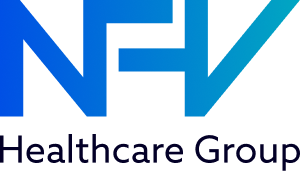Efficient revenue cycle management (RCM) is pivotal to healthcare institutions’ financial health. It’s not just about numbers; RCM reflects the health of patient-provider relationships, operational efficacy, and strategic growth. In the marathon of the healthcare business, each RCM phase is a milestone that demands precision, timely action, and continual improvement.
This article will help you understand the main steps of RCM: patient registration, scheduling, coding, billing, claims submission, and collections. It also provides tips for making each stage more efficient.
The Healthcare Revenue Cycle Optimization Journey
The RCM in healthcare encompasses all healthcare organizations’ processes to manage financial transactions and patient interactions, from their initial appointment to aftercare. Effective management involves identifying potential bottlenecks and inefficiencies at each stage and implementing best practices to ensure a smooth, timely, and cost-effective operation.

Patient Registration and Scheduling
Improving patient experiences begins with registering, scheduling, and setting the service tone. Delays and errors can lead to dissatisfaction and impact payments. Practices can cut waiting times by pre-filling forms with patient data, reducing redundant data entry. Also, implementing patient self-scheduling and automated appointment reminders can reduce no-shows.
Coding and Billing Accuracy
Accurate coding and billing are vital for revenue. Errors can cause claim denials, rework, and delays. Regular training on updated regulations is crucial. Automated coding audit tools help by flagging issues before bill submission.
Claims Submission and Reimbursement
Claim submission requires adherence to payer guidelines and thorough documentation. Follow-up on unpaid or underpaid claims is vital. Provider organizations can enhance efficiency by monitoring KPIs to detect operational issues and address them proactively. A strong denial management process is essential for prompt resolution and revenue optimization for denied claims.
Improving Patient Collections
With rising patient financial responsibility, efficient collection strategies are crucial. Transparency in costs, clear patient responsibility communication, and flexible payment options can boost collections significantly. Healthcare providers can utilize digital platforms for patient payment plans, estimates, and explanations of benefits in patient-friendly language. Early financial discussions with patients can expedite collections.
Effective Practices for RCM Optimization

Organizations must adopt and implement innovative practices to achieve optimal financial outcomes in the complex world of healthcare RCM automation. Below are strategies to optimize RCM automation processes and support revenue growth.
Streamlining Patient Registration and Scheduling
Patient registration is often the first interaction with a healthcare facility, greatly influencing their overall experience. Simplifying the registration process and using modern technology can enhance patient satisfaction and optimize the RCM process.
- Leverage Self-Service Tools: Self-service kiosks or patient portals allow patients to enter their information directly into the system. This reduces the risk of manual data entry errors and streamlining the process.
- Automate Insurance Verification: Implementing technology that can verify patient insurance coverage in real-time reduces delays and ensures accurate information is captured from the outset.
- Use Predictive Analytics: Predictive tools can help forecast patient volumes, allowing for optimized scheduling and resource allocation to meet patient demand effectively.
Enhancing Coding and Billing Accuracy

Billing and coding represent the financial transactions at the heart of the revenue cycle. Ensuring precision and timeliness in these areas can dramatically improve RCM efficiency.
- Continual Training and Education: Regular training sessions are vital to keeping coding and billing staff updated on the latest regulations and best practices. Continuous learning and professional development programs can be implemented to ensure staff expertise.
- Employ Automated Coding and Billing Solutions: AI-driven software can help rapidly process claims, reduce human error, and decrease billing cycle times.
- Outsourcing RCM Services: AI technology can quickly process claims, reduce errors, and speed up billing processes.
Optimizing Claims Submission and Reimbursement
Every successful claim submission and reimbursement enhances the financial strength of a healthcare organization. Here’s how institutions can optimize this phase of the RCM process.
- Conduct Regular Audits: Periodic self-auditing of claims can identify potential issues before submission, leading to fewer denials and faster reimbursements.
- Streamline Documentation Processes: Clear and thorough documentation from physicians ensures claims are processed accurately and efficiently. Electronic health record (EHR) systems can simplify and standardize documentation practices.
- Leverage Data Analytics: Use data analytics to find patterns in claim denials. This helps organizations prevent future denials and improve their financial performance.
Improving Patient Collections
The rise in high-deductible health plans means that patients are now responsible for a larger portion of their healthcare costs. Providers must, therefore, adopt patient-friendly strategies for effective collections.
- Early Engagement: Communicate with patients about their financial obligations early in the process, before services are rendered, to improve understanding and plan for payments.
- Multiple Payment Channels: Offering online portals, mobile apps, and automated phone systems can help patients pay on time.
- Implement Financial Counseling: Trained financial counselors can guide patients through the complexities of healthcare billing and payment options, reducing confusion and improving payment compliance.
Technology Solutions for RCM Optimizations
The healthcare industry rapidly adopts advanced technology solutions to automate and streamline the RCM process. These systems reduce administrative burden, increase accuracy and efficiency, and improve revenue.

The Benefits of Implementing RCM Software
RCM software solutions offer a comprehensive approach to managing the financial aspects of a healthcare organization. Some of the key benefits include:
- Automated Workflows: Software can drastically reduce the time required for manual administrative tasks, such as claim submission, processing, and follow-up.
- Simplified Analytics: Advanced reporting and analytics in RCM software provide insights into financial performances and aid in decision-making for process improvements.
- Integration with EHR Systems: Seamless connectivity between RCM and EHR systems ensures that all clinical and financial data are consistent and current.
- Compliance: RCM software is designed to stay current with the latest regulatory changes, ensuring that claims are always submitted according to payer requirements.
NFV Healthcare Group offers a comprehensive RCM software solution called HEART, designed to manage the revenue cycle effectively and support your organization’s financial goals. Our intuitive platform integrates seamlessly with existing systems and provides the tools and analytics necessary to optimize the RCM process.
Become Our Partner
NFV Healthcare Group is dedicated to supporting the healthcare community in this transformation. With our software and expertise, we can help medical organizations improve their revenue cycle management and achieve financial success. Contact us today to learn how we can collaborate with you to implement cutting-edge RCM strategies.

